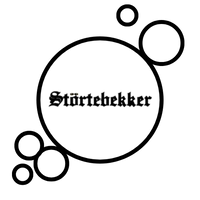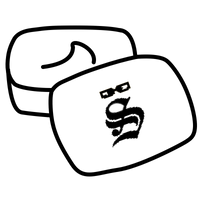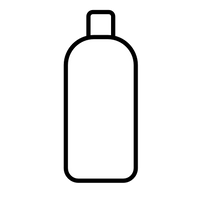Martin is a dedicated entrepreneur and passionate barbershop enthusiast. He has delved deeply into the world of shaving and beard care and aims to bring the unique barbershop experience to every bathroom.
Shaving with acne can be a challenge. Especially with severe acne, shaving the face can be difficult. If you suffer from acne, stay with us.
We have included a few tips and tricks in the following text to help you shave your face smoothly despite acne.
We address the questions of whether it is better to shave with a dry razor when dealing with acne and which aftershave product is suitable.
We also explore whether shaving the face helps with acne.

Can I shave with acne or not?
It should be noted that while primarily adolescents are affected by acne, adults can also have to deal with acne. It doesn't matter how old you are. The tips and tricks you get here can be applied in any situation.
Teenagers who are getting their first beard growth and are also struggling with acne often wonder if they can even shave their beard with acne. Ultimately, shaving can cause skin irritation.
A ingrown beard hair, razor bumps that occur alongside acne, and cuts are all strains on your skin.
Even though shaving with acne is challenging, it is possible. Make sure that the pus-filled parts of your pimples are not removed with the razor.
The bacteria that were in the pores can be spread across the entire face.
If you have a cut or a pimple that opened while shaving, then post-shave skincare is especially important. We will discuss post-shave care further down in the text.
What we can already advise you? Be cautious!
You can shave, but do not apply too much pressure with the razor. The greater the pressure, the higher the risk of opening a pimple or suffering a cut.

Is shaving good for acne?
For men and their hormonal balance, having oily skin may be a good sign. When androgens, which are sex hormones, are released in greater amounts, the skin's oil production increases. However, this has the downside that the pores can become clogged, the oil does not drain, and blackheads can form. If the oil does not exit the pore, inflamed pimples may appear.
The skin needs to be cared for with acne. Even if the skin is oily, it lacks moisture. Therefore, the facial skin should be treated with moisturizing ingredients such as glycerin, hyaluronic acid, or allantoin.
Can shaving sometimes help with acne? Searching online for experiences, some people report that their acne improved after shaving.
If you remove the pus-filled part of the pimples with the razor, the bacteria that were in the pores can spread across the entire face. This means that the number of inflamed pores increases, and more pimples may appear. Therefore, make sure to avoid cuts and try not to open pimples with the razor.
There is no evidence that acne improves after shaving. However, shaving acts like a peel for the upper skin layer. If you use caring products after shaving, the ingredients can penetrate faster and target the inflammation.
But not only your skin needs care. If you have a beard, beard care products from Störtebekker are ideal to keep your beard soft and well-groomed!
How do I shave with acne?
Wet or dry shave with acne? The following section covers both shaving techniques and provides a few tricks. On one hand, how to shave gently with acne, and on the other hand, how to prepare and care for your skin after shaving.
The Preparation
First, focus on the choice of the right shaving gel or suitable shaving soap. Ensure that the product contains as few ingredients as possible. Fragrances or products derived from petroleum should be avoided due to potential skin irritation.
Ideally, the chosen product contains allantoin. Allantoin moisturizes and improves moisture regulation. Additionally, this ingredient acts as a dermal keratolytic. This means that dead skin cells on the surface are removed, and the growth of epithelial cells in the deeper skin layers is stimulated. This process helps renew the upper skin layer.
Let the shaving soap or gel sit for several minutes to soften the beard hair so you need less pressure with the razor during shaving. Shave before showering. Water will make your skin swell, making shaving with acne more difficult.
Use a clean razor for wet shaving or a clean razor head if you are planning a dry shave. Ideally, you should have cleaned the razor or razor head with a disinfectant liquid after the last shave.
The Shaving
If you suffer from acne, start the shave on your neck and continue on your cheeks. The beard hairs here are softer than on your chin or above your lip. The longer the shaving gel or soap sits, the softer your beard hairs will be.
Shave in the direction of hair growth and never against the grain. Shaving against the grain risks skin irritation, which may require treatment for shaving rash.
Ensure you apply minimal pressure. Therefore, it is important to use a sharp razor blade.
If you do not want to shave with a wet razor and plan to use a dry razor, note that a dry shave may seem gentler on the skin at first glance. However, if you apply too much pressure, you can also open pimples and worsen skin problems.

The Right Care
Whether wet or dry shaving: After shaving, you need to care for your skin and clean your shaving tools. Clean the razor blade and the razor head of the shaver and treat them with a disinfectant liquid. This can kill any bacteria if you have opened a pimple while shaving.
Use skin-soothing lotions. Ideally, use ointments and creams containing aloe vera.
If you find a product labeled “non-comedogenic,” it means the manufacturer states that the product does not contain ingredients that cause blackheads. "Comedogenic" derives from "comedo," which is the technical term for blackheads.
Expert Tip: Just because a product is labeled “non-comedogenic” does not mean it helps with acne. To treat acne, you need products with antibacterial agents. The “non-comedogenic” product does not necessarily have to have antibacterial effects.
Should you shave with acne using a dry or wet razor?
Wet shaving is superior to dry shaving in terms of thoroughness. However, wet shaving has the disadvantage of irritating the skin more. There is also the risk of worsening the condition. If a pimple is cut open, the bacteria in the pore can spread, leading to new pimples.
Dry shaving is gentler on the skin, but it is still advisable to use wet shaving. It has a similar peeling effect. Since the upper skin layers are removed, the ingredients in care products penetrate more quickly and reach the inflamed areas more effectively.
Although personal preference plays an important role, the benefits of wet shaving for acne usually outweigh those of dry shaving. Ultimately, wet shaving achieves a peeling effect that is absent with dry shaving.
Which aftershave is recommended for acne?
The aftershave product should be as natural as possible. The skin has been stressed by shaving and should now be calmed. Fragrances can have the opposite effect.
Alcohol is not a problem. Alcohol, usually found in the form of ethanol, has a disinfecting effect. The alcohol in aftershave causes the burning sensation after application.
Ensure that your aftershave contains not only alcohol but also astringent. Ingredients with astringent properties help the skin reduce inflammation as they cause it to contract more quickly. Plant-based astringents, such as witch hazel and sage, also have a positive effect on the skin and reduce inflammation.
Conclusion
Shaving with acne may be challenging. With a few tips and tricks, such as the right shaving technique, it is possible to shave with acne. With some measures, you can also reduce the risk of developing new pimples after shaving. It is important that the shaving tools are clean and that the skin is properly cared for after shaving.
FAQ
Can shaving cause pimples?
There are shaving pimples that are not related to acne. These are small inflammations also caused by bacteria.
Minor skin injuries, ingrown beard hairs, or overly aggressive skincare after shaving, such as with products containing synthetic substances, can lead to shaving pimples.
Which razor is best for impure skin?
A sharp razor blade is important as it requires less pressure during shaving. An electric shaver for dry shaving is an alternative, but dry shaving lacks the so-called “peeling effect.”
It is important that the tools are clean and disinfected to avoid transferring bacteria.
Expand your knowledge by exploring more posts:
 Free shipping from
49€
Free shipping from
49€
 100 days return
100 days return
 Festes Shampoo
Festes Shampoo Body Bar
Body Bar Handsoap
Handsoap Pomade
Pomade Gesichtspflege
Gesichtspflege Deo
Deo Hair & Body Wash
Hair & Body Wash Haar Booster
Haar Booster Safety razor
Safety razor Straight razor
Straight razor Shaving soap
Shaving soap Razor blades
Razor blades Shaving accessories
Shaving accessories Beard care
Beard care Beard styling
Beard styling



















